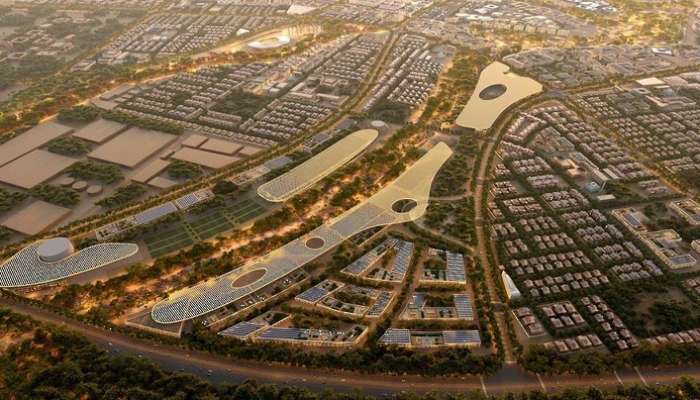
Muscat: Sultan Haitham City has been engineered to achieve sustainable environmental balance by relying on the use of solar energy, applying waste-to-energy production systems, and treating wastewater.
Eng. Khalfan bin Masoud Al Naabi, Director General of Urban Planning at the Ministry of Housing and Urban Planning, explained that the urban strategic policies take into account sustainability and balance between human needs and the natural and environmental resources available in Sultan Haitham City, and its design achieves all these data, which will contribute to raising the levels of urban planning.
He indicated that the new city projects will not affect the environment, and the designs are suitable for finding sustainable means of transportation and implementing advanced infrastructure.
For his part, Al Hassan bin Ali Al Shakiri , the architect of Sultan Haitham City, said that the 12 basic features of the city take into account sustainability in terms of design and operation, and the implementation processes will take into account wind directions to reduce the temperature in the city, and this will form the concept of a walkable city.
The use of solar energy in electricity production is a major foundation in the city, and the use of modern and smart systems has been taken into account in operating the buildings.
On the other hand, Engineer Hamad bin Salem Al-Maghdari, CEO of Al Maha Petroleum Products Marketing Company, said that the company is implementing the directives of Oman Vision 2040 in aspects related to the environment and reducing emissions through the use of modern technologies in service management, noting that the effort is ongoing in the field of renewable energy in providing various centres with electric chargers for cars, as the focus will be on Sultan Haitham City, which will achieve the goals of sustainable and comprehensive development, especially with regard to renewable and clean energy.
The Ministry of Housing and Urban Planning explained in a statement that the city will be “comfortable” by adopting the designs of external areas on natural shade through afforestation, in harmony with its architectural nature in determining the directions of urban buildings, providing natural spaces in the open air, distributing the density and height of buildings, and designing streets.
The city will also be built to be “easy to access” by adopting a policy of distributing the road network, community facilities and services within close distances, taking into account the possibility of accessing the largest possible number of facilities, in addition to the city containing an internal network for transportation, diverse and accommodating different types of transportation methods, such as public and private transportation and special paths for pedestrians and bicycles, in a way that connects the city’s neighbourhoods, its center and various facilities, enhanced by methods of comfort and safety.
The city’s smart planning mimics the nature of its location and applications that keep pace with modernity and facilitate the user’s daily life, harnessing effective technological solutions and innovations in the design and operation of infrastructure and buildings, in a way that meets current and future needs, which will make it a “beloved” city that creates the moment and offers luxury through the harmony of all its features, details, services and facilities, starting from choosing its strategic location and ending with the features of luxury and comfort, to be an attractive and preferred destination for everyone.